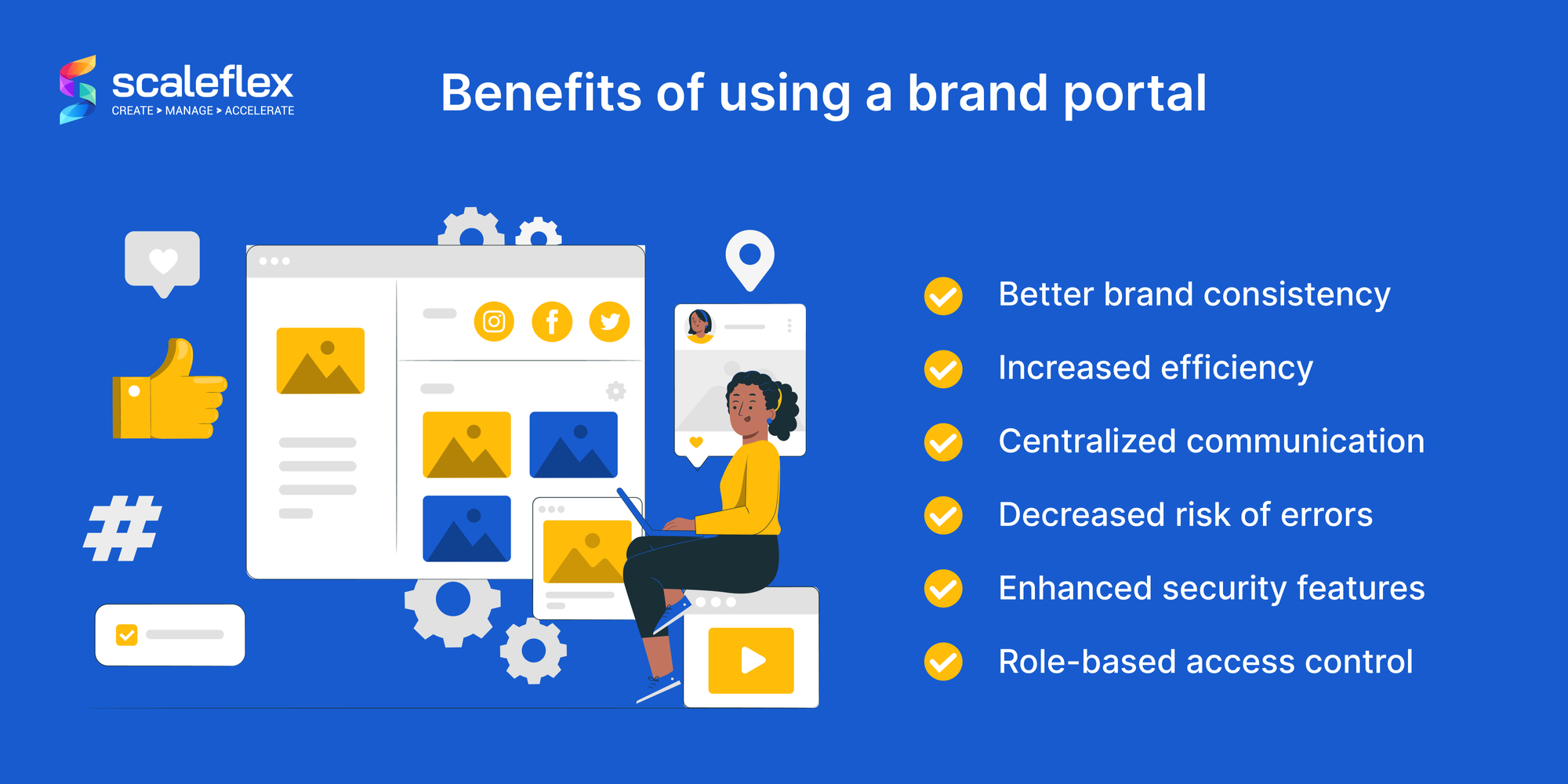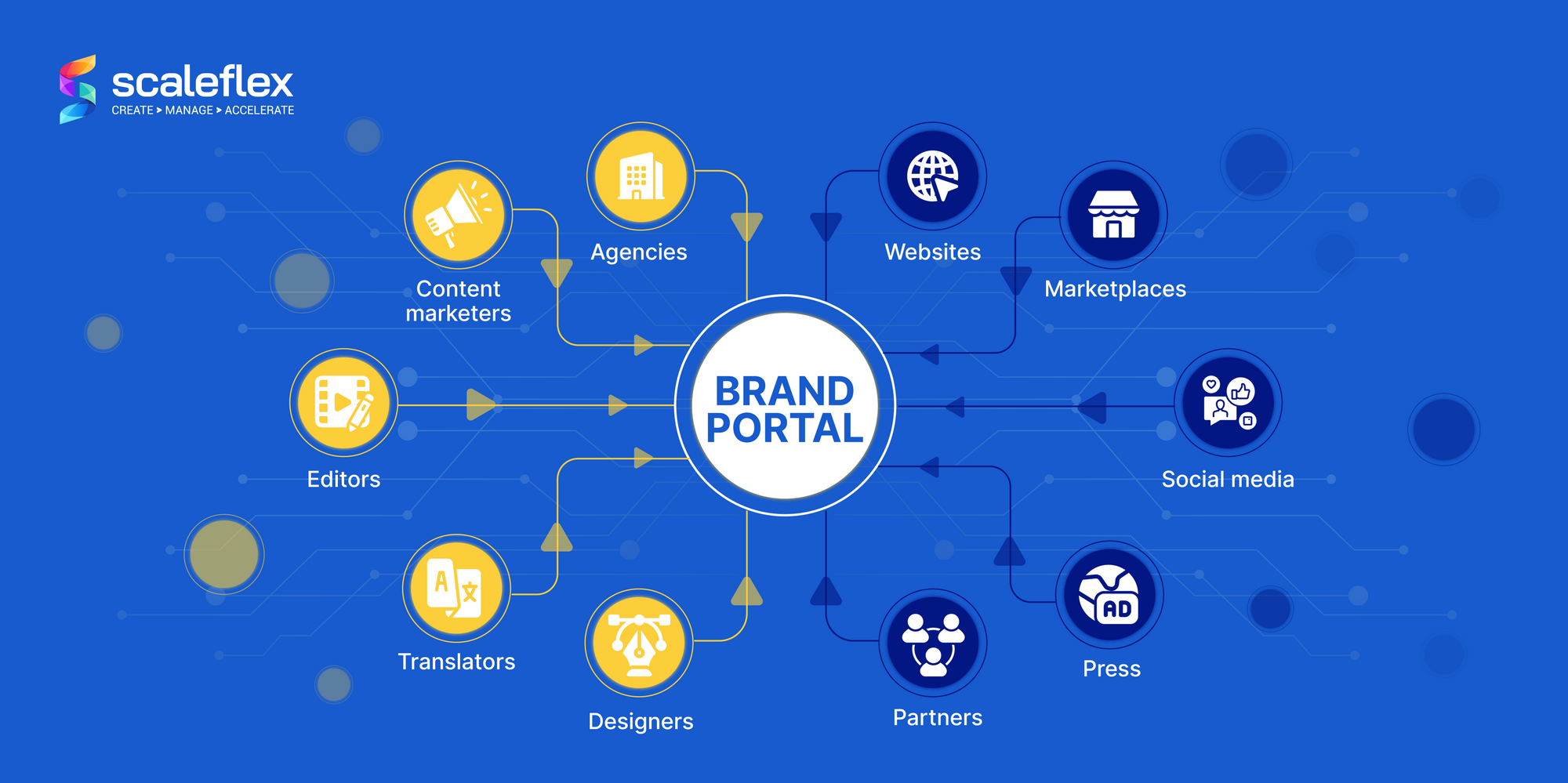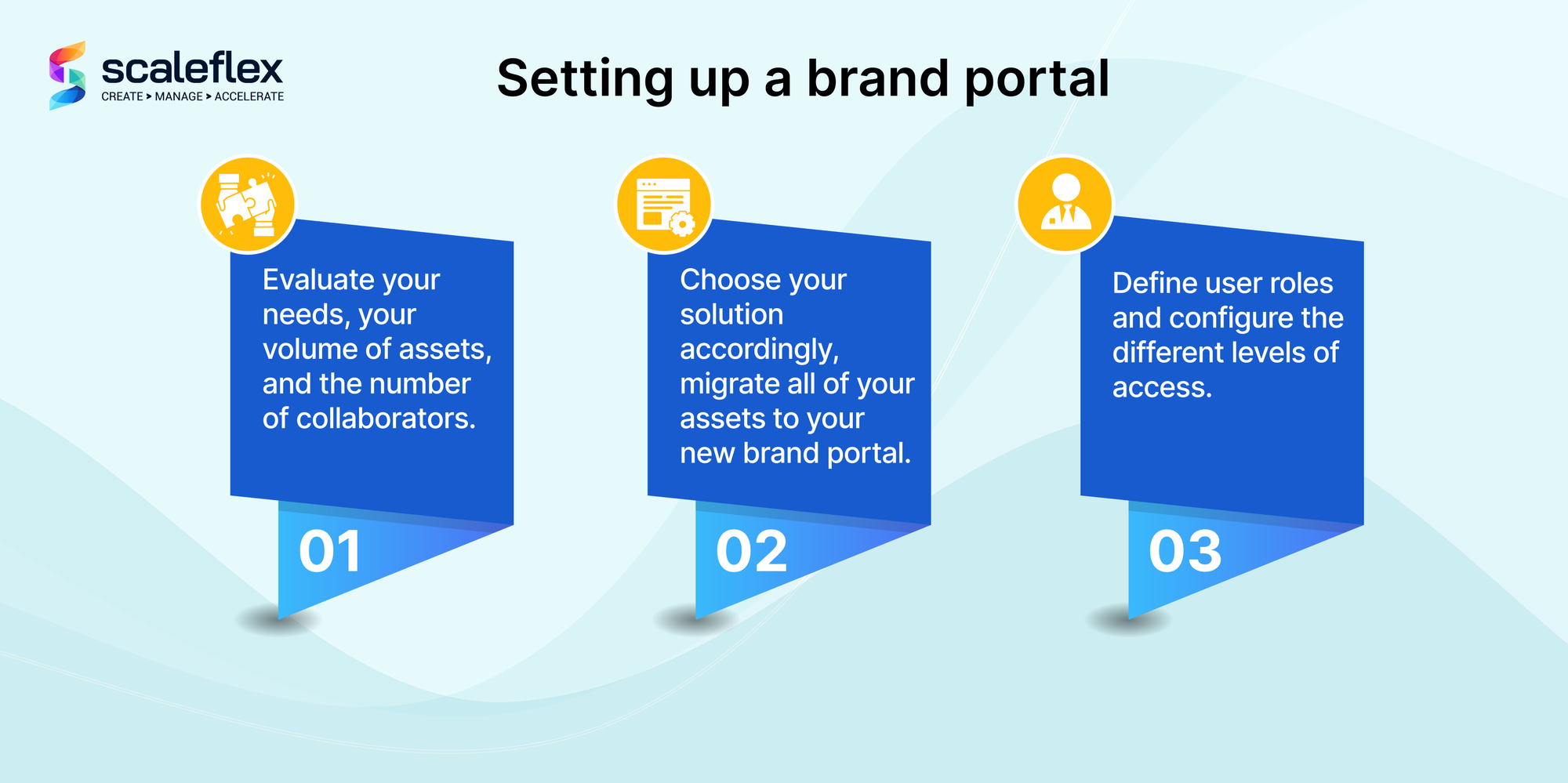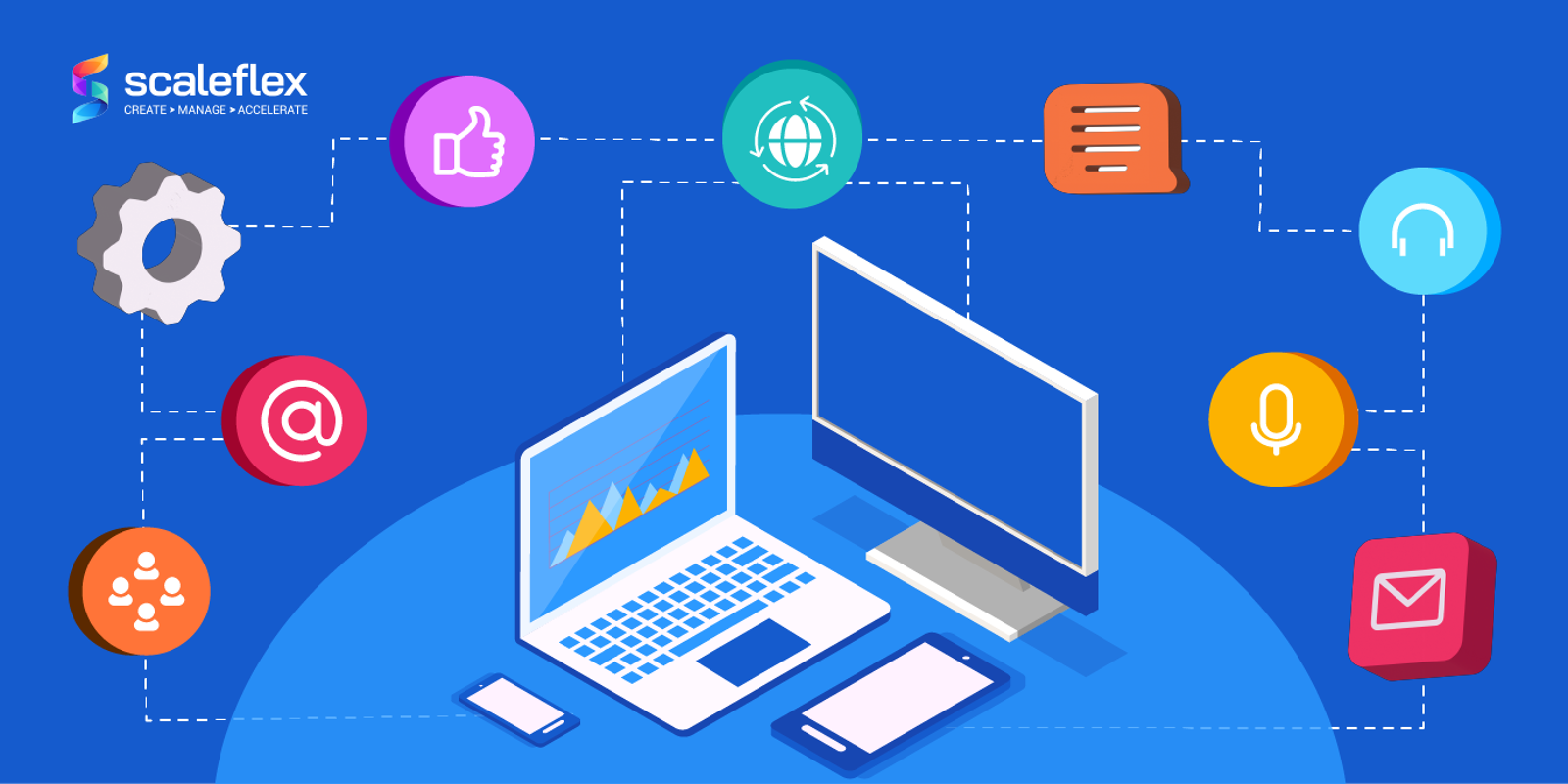Brand Portal Explained: Everything You Need To Know, Benefits And Examples
First and foremost, let’s tackle this from the beginning: what is a brand portal? A brand portal is a centralized, digital platform designed to manage and streamline a brand’s multimedia assets. The name, “brand portal”, derives from the fact that all these elements are components of the brand’s identity: its visual personality, its assets and its communication.
A brand portal serves as a comprehensive hub where a business can store, organize and distribute brand-related content efficiently, be it to internal or external stakeholders. A brand portal can typically house any range of audiovisual materials like logos, marketing collaterals, brand guidelines, visuals, videos and other assets that prove crucial to maintain brand consistency as well as to communicate with an audience.
The primary function of a brand portal is to provide its authorized users with easy access to up-to-date brand resources. This way, a company can ensure that everyone involved in their brand’s representation (marketing teams, partners, vendors, marketplaces, press…) is adhering to the latest visual and messaging standards.
Aside from this, brand portals also contribute to efficient collaboration and effective communication within an enterprise, as teams can work seamlessly by accessing the same shared resources. This reduces the likelihood of inconsistencies in brand representation, but also fluidifies work processes, as authorized users have direct access to the portal and don’t need to put a request with marketing or design teams to access the content.
Another integral aspect of brand portals are the security features, which allow administrators to control different levels of access and safeguard sensitive information.
In a nutshell, a brand portal is a digital command center for a brand. It enables cohesion, efficiency and adherence to the established brand guidelines. Modern businesses face growing complexities in marketing and communication, and implementing a brand portal can be a strategic move that preserves and promotes not only a unified brand identity, but a smoother and more cohesive way of work.
Benefits Of Using A Brand Portal
Adding a brand management portal to your enterprise’s environment can yield a broad spectrum of benefits, starting with an overall enhancement of brand management and a more cohesive, streamlined approach to communication. In essence, an online brand portal can be a catalyst for efficiency, as it centralizes digital assets, guidelines, and use authorizations.
Let’s start off with the way brand portals can contribute to maintaining brand consistency. In our current corporate landscape, it has become almost the norm to see diverse, widespread teams, working with many external collaborators, and they are all involved in brand representation: the internal marketing team, external marketplaces and vendors, partners, content agencies, PR agencies, freelancers… the list can go on and on.
Maintaining a unified brand identity across all fronts is crucial, and in today’s visual-lead world, that passes forcefully by the production of all kinds of visual content. Implementing a brand portal can ensure that every person involved, to their degree of need, use, and permission, can access the latest and approved versions of logos, imagery, collaterals, press releases, product shots, collaterals… thus mitigating the risk of inconsistent branding as well as considerably reducing relentless and exhausting back-and-forths between in-house teams and external collaborators.

The efficiency a brand portal can give to an enterprise is a significant advantage not to be overlooked. Cross-functional teams can collaborate seamlessly thanks to a brand portal, which becomes the evident go-to resource for any shared asset. Not only does this accelerate project timelines, but it can also reduce the potential of miscommunication and error, as everyone is aware first-hand of the brand’s vision and guidelines.
Let’s move on to the security features that are an inherent aspect of brand portals, and which add an extra layer of control and management within the company. Administrators of the marketing portals can manage their users' access levels in order to protect sensitive brand information from unauthorized access and use. This security feature is particularly relevant for those enterprises with extensive partner networks, as it protects the integrity of the brand, all the while facilitating those external collaborations.
Finally, brand portals offer the ability to track and analyze usage patterns within it, providing valuable insights. This allows companies to gauge which assets are most frequently viewed, which can prove invaluable data when it comes to future brand strategy decisions. The analytical component of the brand portal ensures the ongoing optimization of the assets and guidelines it houses. It helps brands remain agile and responsive to changing marketing dynamics.
In essence, what can be said is that the benefits of adding a brand portal into company operations reach far beyond mere asset organization and distribution. When used correctly, a brand portal is a strategic tool that fortifies brand identity, fosters collaboration, maintains security and leverages data for continuous improvement.
Who Needs A Brand Portal?
Many different sectors and a span of distinct professional roles can benefit from a brand asset portal’s utility. It’s a versatile asset for any entity invested in keeping a consistent and impactful brand presence. Regardless of the industry, in-house marketing teams find considerable value in brand portals, as they ease efficient collaboration amongst designers, content creators and writers as well as strategists, ensuring that marketing campaigns are seamlessly aligned and integrated with brand guidelines.
Any large corporation with an extensive partner roster, or any franchise, can considerably benefit from the implementation of a brand portal. As it provides a centralized repository of assets, organizations can directly empower partners to independently access their latest materials, knowing brand uniformity will be maintained, across all platforms and locations.

Creative teams or design agencies can also benefit hugely from brand portals, as they can enable them to streamline their workflow through a single source of truth for assets. It becomes particularly beneficial when handling multiple clients with distinct brand identities, needs and guidelines.
Brand portals offer, first and foremost, flexibility, security and organizational efficiency, which is something any sector and professional role can essentially benefit from.
Key Examples
In examining real-word applications, we can take a closer look at key sectors such as e-commerce, hospitality and real estate, as they exemplify the transformative force of brand portals.
Any business, from global online retailers to hotel chains, can benefit from consistent visual standards, identity upkeep across diverse locations, and a unified brand narrative. Let’s dive into some real-life brand portal examples:
- Hotel Chains often make use of brand portals in order to maintain consistency in branding across different properties. The brand marketing portal becomes a repository for logos and other promotional materials, ensuring that each hotel maintains the brand’s identity, all the while adapting to local nuances.
- Travel agencies heavily rely on the use of brand portals to distribute their marketing collateral to their different branches and affiliates. This guarantees that the promotional materials, itineraries and brand messaging are consistently aligned, which enhances the overall customer experience.
- Global Online Retailers can employ brand portals to manage product imagery, promotional content and branding guidelines, ensuring that vendors and affiliates globally are adhering to the brand’s visual standards, which fosters a cohesive online shopping experience.
- Real Estate firms with many different projects use brand portals in order to share architectural renderings, any marketing collateral, branding guidelines, and property images with their internal teams and external agencies, in order to guarantee a consistent portrayal of their brand and the highest-quality visual materials for each new development.
In every one of these examples, the brand portal acts as a central hub, the beating heart of the company’s brand identity, ensuring adherence to guidelines, contributing to a unified brand presence.
How Can I Set Up A Brand Portal?
Setting up or acquiring an online brand portal is a strategic process that needs to be tailored to the unique needs, and scale, of a given company. Enterprises can choose to either invest in existing brand portal solution services offered by specialized providers, or custom develop a solution in-house.
The process of setting up a brand portal will usually begin with a comprehensive assessment of the company’s assets, guidelines and user access needs. This will allow to estimate the level of proficiency and specialization required from the portal, which will orient the company towards a highly-specialized solution proposed by a provider, or a simpler in-house approach.
In the case of using an external provider, the chosen platform should align with the scale, security standards and collaborative requirements of the company. The implementation step by which the marketing portal integrates the company involves uploading all the brand assets to the portal, defining user roles and configuring the different access levels. A critical step when setting up a brand portal is sharing very clear guidelines on portal usage, to ensure every stakeholder understands its purpose and functionality.

Once the portal has been installed, regular updates and maintenance are essential to keep it up-to-date and effective.
Key Takeaways
In a nutshell, brand portals are an indispensable asset for enterprises in many sectors. Solutions like Scaleflex's Content Hub and Brand Portals serve as a centralized hub for brand assets and guidelines, it oversees brand consistency, fluidifies collaboration and fortifies security. Its highest value resides in the strong organizational efficiency it provides.
Setting up a brand portal is a thoughtful process, through which different solutions must be carefully considered, to find the one true match in terms of needs, scalability and security. In today’s digital landscape, which is more demanding than ever, brand portals are instrumental for brands to maintain unified, impactful and resilient brand identities.





